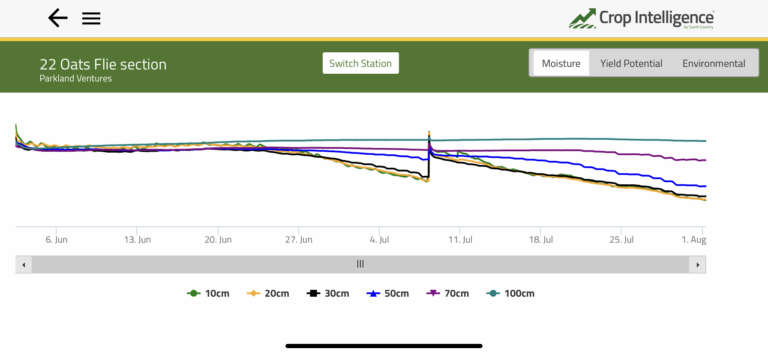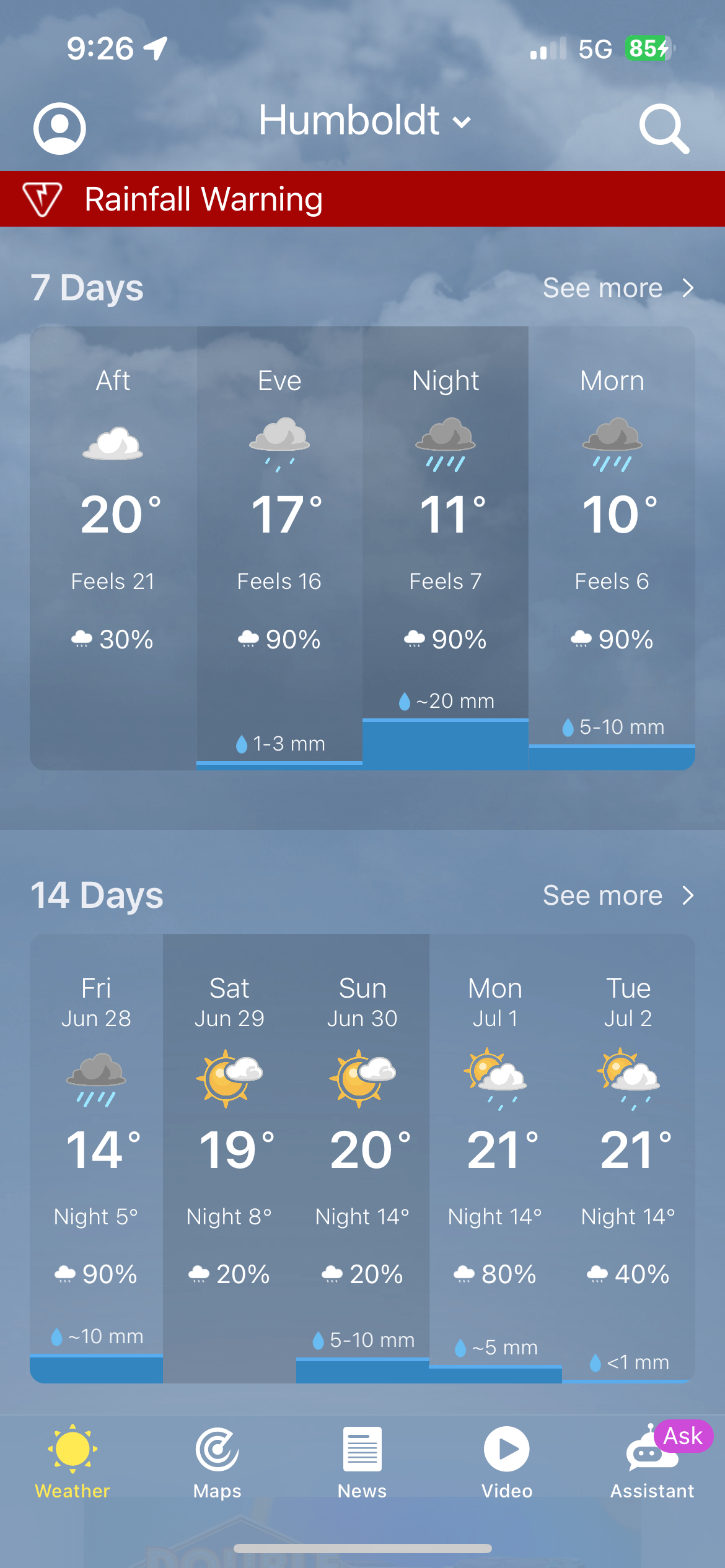The last week of July and we did get some warmer days finally. The crop has been maturing and in the south the maturing has been accelerated by lack of moisture. The mositure stress is starting to show up alot more now down south with the lack of rainfall we have had down there this year. If we can get some rain it will still be beneficial for yield. Up north there are not any visual signs of moisture stress, but our soil moisture probes are starting to show the rapid depletion of our sub-soil moisture levels. As the crop gets bigger, the daily moisture needs are higher, and the roots continue to move down in the soil to access those moisture reserves.
We have been using soil moisture probes and weather stations for the past 4 years on our farm. We first started with one weather station / soil moisture probe and now have 4 in total – one in the south, one in the middle, and two up north. These probes have aided our decision making by making us more confident in decisions such as purchasing hail insurance, fungicide use and forward contracting the crop. This year we could see very good soil moisture levels up north and central areas, with alot less soil moisture available in the south. As we got into the season, we could also see the weather patterns were favoring the north land. The ability to see actual rainfall amounts and how it soaks into the soil has been valuable. Early on, visually, the crop looked very similar across the farm, but we knew the crop potential was much greater in the north due to these stations.
One of the bigger decisions we made was to use a growth regulator in our cereals. The issue with growth regulators is that if you have a hot and dry season – it can actually have a negative affect on yield. Last year it had a huge impact on yield as some people saw 20-30% less yield where it was sprayed – although last year was a record dry season. But if those who had decided to spray last year had the current soil moisture levels, maybe they would not have sprayed – as it showed that we were going to be reliant on in-season rainfall, as there were no moisture reserves available. With some of the bigger storms we had up north, the growth regulator has been a good decision – as the crop is shorter, and more importantly, it did not lodge.
Below are some screenshots of our soil mositure probes. There are sensors located at 10cm, 20cm, 30cm, 50cm, 70cm and 100cm levels. Each level has different soil quality at that level, so they are not for comparing between each level, rather they show each level relative in time during the growing season. We started the season with decent moisture levels and those levels were maintained in all areas except the south. Now you can see a big decline in all of the moisture probes. As the roots grow into the zone you see the corresponding line starts to go up and down (daily use, replenishes at night) – and if no new moisture is received, the line will keep dropping. When the roots keep going deeper, they access the next level. As you can see from the photos, the roots are actively drawing from as deep as the 70cm level, with the one showing draw from the 100cm level. This is good – some years there are smaller rains every week which encourage roots to stay shallow. Then when it does dry out, they are unable to access the lower levels. It doesn’t matter if there’s unlimited water available below if the roots cannot access.
Another interesting note with the probes – they allow you to see how significant a rain event actually is. If moisture levels are high, one 30mm rain event may show moisture getting all the way down to the 100cm level. If moisture levels are low, that same 30mm rain event may only go down to the 20 or 30cm depth.
We are still learning how these probes can help us manage. So far we have found they give us confidence on making decisions that we do. We can’t control the weather but we can try to take advantage of situations that you may not know otherwise.








